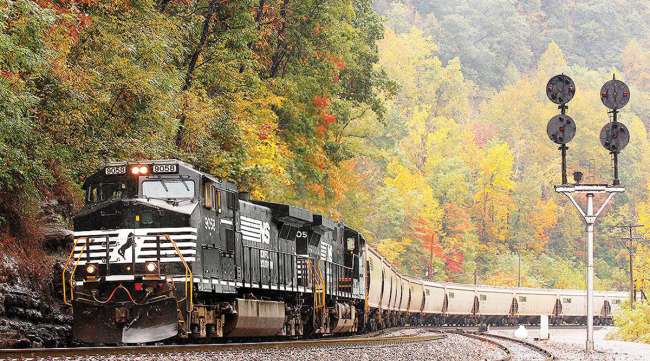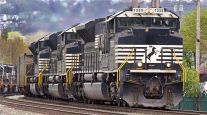Senior Reporter
Norfolk Southern Q3 Net Income Down; Revenue From Coal Shipments Plummets

[Ensure you have all the info you need in these unprecedented times. Subscribe now.]
Norfolk Southern Corp. carried 7% less freight in the third quarter, but the Class I railroad still beat Wall Street expectations when it reported third-quarter earnings Oct. 28. The results include a one-time assessment.
Because of the COVID-19 pandemic and recession, Norfolk Southern earned net income of $569 million, or $2.22 per share — down from $657 million, or $2.49, a year earlier. But excluding a one-time $99 million asset impairment charge, the railroad earned $2.51 per share.
Seven analysts surveyed by Zacks Investment Research expected earnings of $2.36 per share.
Third-quarter revenue dropped 12% to $2.51 billion, with a 42% plunge in coal shipments being a leading factor. Analysts predicted revenue of $2.53 billion.
Operating ratio worsened to 66.5 from 62.5 the prior year. The metric measures a company’s operating expenses as a percentage of revenue and determines efficiency. The lower the ratio, the greater the company’s ability to generate a profit.
As has been the case at all Class I railroads, Norfolk Southern is operating with far fewer employees. Compared with the third quarter of 2019, it has reduced payroll by 18.3%, now operating with 19,606 employees after having 24,002 at this time in 2019.
CEO Jim Squires said the railroad managed to reduce employee headcount during the quarter even as it handled the surge in volume because of the changes it is making.

Squires
“Since launching our precision scheduled railroading strategy, we have significantly enhanced Norfolk Southern’s operational and financial performance and delivered superior returns for shareholders,” Squires said in a statement. “Given the impact of the COVID-19 pandemic on our industry and the broader economy, we quickly executed a plan to align our assets and resources with demand and generate sustainable margin improvement.”
Norfolk Southern is one of several Class I railroads that has aggressively moved to become more efficient via PSR. The business principle involves moving freight with fewer railcars and locomotives using a more simplified, direct line of transport across the network.
Revenue declined in all but one of the sectors in which Norfolk Southern moves freight.
Automotive was the only sector to see an increase, rising 9% to $270 million from $247 million last year.
Sectors posting decreases compared with the same period of 2019:
- Agriculture, forest and consumer products — 9% to $521 million from $572 million.
- Chemical — 20% to $428 million from $535 million.
- Metals and construction — 11% to $337 million from $377 million.
- Merchandise — 10% to $1.56 billion from $1.73 billion.
- Intermodal — 1% to $700 million from $707 million.
- Coal — 42% to $250 million from $403 million.
During their earnings reports, all of the Class I railroads have reported a steep drop in revenue from coal shipments. The U.S. Energy Information Administration on Oct. 5 said that in 2019, domestic coal production fell 6.6% year-over-year to 706.3 million tons. Also, the number of people employed in the coal industry dropped to 50,000 in late 2019 from 95,000 in 2012, according to S&P Global Market Intelligence.
Want more news? Listen to today's daily briefing:
Subscribe: Apple Podcasts | Spotify | Amazon Alexa | Google Assistant | More




